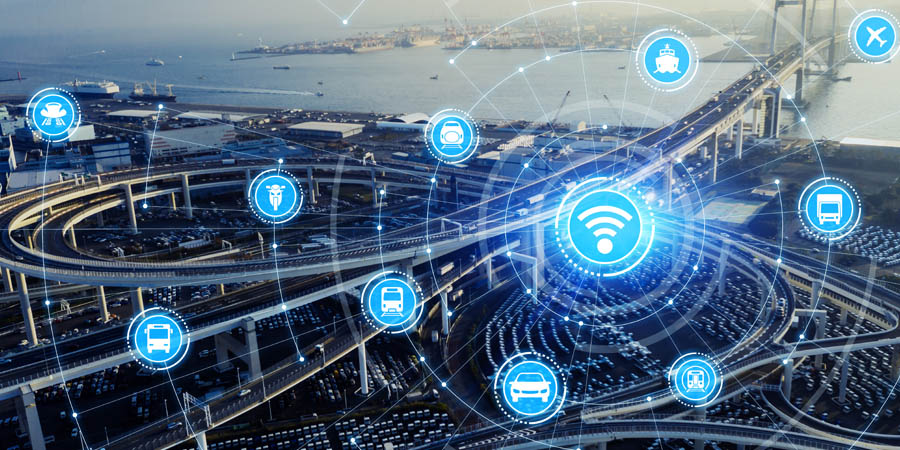The Asia Pacific region is experiencing a transformative wave of digitalization, significantly impacting the efficiency of public services. Telecom technologies are at the forefront of this evolution, enabling governments to improve service delivery, enhance citizen engagement, and drive socio-economic development.
The digitalization of public services is a pivotal aspect of modern governance, aiming to make services more accessible, efficient, and transparent. According to a report, digitalization in the public sector has led to significant improvements in service delivery across various countries in the region. The integration of telecom infrastructure has been instrumental in this transformation, providing the necessary connectivity and platforms for digital public services.
In countries like Singapore, South Korea, and Japan, advanced telecom networks support e-government services, enabling citizens to access a wide range of services online, from tax filing to healthcare consultations. Smart Nation Singapore’s “LifeSG” platform, Japan’s e-Gov platform, Malaysia’s “MyEG” platform and more reduce the time and resources required for service delivery, making public administration more efficient and responsive to citizen needs.
Related: Public Cloud Services to Reach USD 165.2 Billion in 2026
Enhancing Public Service Efficiency through Telecom Solutions
Telecom technologies offer a multitude of solutions that enhance public service efficiency. These solutions include mobile applications, 5G-Advanced integrations, cloud computing, and Internet of Things (IoT) devices, all of which facilitate real-time communication, data collection, and service delivery.
One notable example is the use of mobile applications to improve public health services. In India, mobile health (mHealth) initiatives have revolutionized healthcare delivery, particularly in rural areas where access to medical facilities is limited. These mHealth platforms leverage telecom networks to provide remote consultations, health monitoring, and information dissemination, thereby improving healthcare accessibility and outcomes.
Cloud computing is another critical telecom solution that enhances public service efficiency. By migrating public sector data and applications to the cloud, governments can achieve greater flexibility, scalability, and cost-efficiency. For instance, the Philippines has adopted cloud-based solutions to streamline its tax administration system, resulting in faster processing times and reduced administrative costs.
IoT devices are also transforming public services by enabling the real-time monitoring and management of public infrastructure. Smart city initiatives across the Asia Pacific, such as those in China and Malaysia, utilize IoT sensors to monitor traffic flow, air quality, and energy consumption. These smart systems help city authorities make data-driven decisions, improving urban management and enhancing the quality of life for residents.
Telecom Review Asia Exclusive Feature: The Impact of Remote Collaboration Tools and Telecom Infrastructure in the Asia Pacific
Mobile Connectivity and Economic Impact
Mobile connectivity is a cornerstone of telecom’s contribution to public service efficiency. A GSMA report highlighted the significant economic impact of mobile connectivity in the Asia Pacific, noting that mobile technologies contribute substantially to the nation’s GDP and job creation. By extending mobile networks to underserved areas, telecom operators are bridging the digital divide and enabling inclusive access to public services.
In Indonesia, the expansion of mobile networks has facilitated the delivery of educational services to remote communities. Mobile learning platforms offer educational content and resources, allowing students to continue their studies despite geographical barriers. This not only enhances educational outcomes but also promotes digital literacy and skill development among the youth.
Moreover, mobile money services have transformed financial inclusion in the region. Countries like Bangladesh and Cambodia have seen a surge in mobile money adoption, enabling unbanked populations to access financial services such as payments, savings, and loans. These services are crucial for economic empowerment and poverty alleviation, demonstrating the profound impact of mobile connectivity on public welfare.
Industry Analysis: Exploring 5G Monetization Strategies in the Asia Pacific
Navigating Public Services Challenges and Solutions
Despite the significant advancements, the deployment of telecom solutions in public services faces several challenges. These challenges include infrastructure gaps, regulatory hurdles, and cybersecurity threats. Addressing these issues is essential to fully realize the potential of telecom in enhancing public service efficiency.
Infrastructure gaps, particularly in rural and remote areas, remain a major barrier. Many regions still lack reliable telecom infrastructure, hindering the delivery of digital public services.
In the Asia Pacific region, various policies and initiatives have been implemented to address infrastructure gaps. India’s Digital India Program and Smart Cities Mission aims to enhance digital connectivity and develop urban infrastructure across the country. Similarly, the ASEAN Smart Cities Network fosters collaborative smart city projects to improve urban infrastructure and connectivity. Australia’s National Broadband Network focuses on expanding high-speed internet access, particularly in underserved areas, while Singapore’s Smart Nation Initiative integrates advanced technologies to enhance urban living. Japan’s Super City Initiative also leverages technology to improve urban infrastructure and disaster resilience, reflecting a broad regional commitment to closing infrastructure gaps through innovative solutions.
Related: Regulatory Environment Influencing Telecom Operations in the Asia Pacific
To tackle cybersecurity challenges, the Asia Pacific region has introduced several key policies and measures. Singapore’s Cybersecurity Act and Personal Data Protection Act (PDPA) has established comprehensive frameworks for protecting critical infrastructure and personal data. China’s Cybersecurity Law mandates strict security practices for companies, while Japan’s Cybersecurity Basic Act emphasizes the protection of critical infrastructure and international cooperation. Malaysia’s National Cyber Security Policy outlines strategies to safeguard cyberspace and enhance national cybersecurity capabilities, collectively reflecting a robust regional effort to address cybersecurity threats and enhance digital security.
Also Read: Telco Cloud Orchestration Revolutionizing Connectivity in the Asia Pacific
Telcos Enhancing Public Service Efficiency
Telecommunication companies in the Asia Pacific region are playing a pivotal role in enhancing public service efficiency through various innovative initiatives and partnerships. These efforts range from improving emergency communications and digital healthcare to providing free public Wi-Fi and launching IoT data services for public transportation. Here’s a closer look at how some key players are making a difference.
Infinera is addressing more than just capacity needs by enhancing public service efficiency in the Asia Pacific region. Through their advanced optical networking solutions, they ensure that critical services like emergency communications and government networks operate smoothly and reliably, enabling quick and effective public service delivery.
Tata Communications has partnered with Google Cloud India to offer public cloud services, significantly improving public service efficiency. This collaboration provides scalable, secure, and resilient cloud infrastructure, enhancing the digital transformation of public services and enabling faster, more efficient service delivery to the public.
Globe Telecom is transforming service assurance with MYCOM OSI, enhancing public service efficiency in the Asia Pacific region. This transformation ensures that public sector networks are robust, reliable, and capable of meeting the growing demands for digital public services, leading to improved service quality and responsiveness.
Telekom Malaysia is revolutionizing digital healthcare services, significantly contributing to public service efficiency. By leveraging their telecommunications infrastructure, they enable seamless telemedicine, remote consultations, and efficient healthcare management, improving access to quality healthcare services for the public.
Read More: Collaborative Ventures Between Telecom Operators and Vendors in the Asia Pacific
In March 2024, AIS and True Corp announced that they are preparing to launch an emergency cell broadcast service, enhancing public service efficiency by providing timely and accurate emergency alerts to the public. This initiative ensures that critical information reaches citizens quickly during emergencies, improving public safety and disaster response.
IIJ and Murata have launched new IoT data service applications for road and equipment maintenance in public transportation and traceability management of mobile assets. These applications enhance public service efficiency by ensuring the reliability and safety of public transportation systems, leading to improved service delivery and maintenance management.
PLDT Enterprise has empowered the Local Government Unit (LGU) of Cebu City to launch free public Wi-Fi services in 50 barangays. This initiative boosts public service efficiency by enhancing citizens' access to information, enabling better communication between the government and the public, and supporting various digital services.
In 2022, Singtel, in partnership with Microsoft, introduced the first public MEC solution in Asia. This solution has the potential to transform operations in sectors such as public safety, urban planning, healthcare, banking, civil service, transportation, and logistics. By providing ultra-low latency and high bandwidth, it enhances public service efficiency across multiple sectors, leading to improved service delivery and operational effectiveness.
Continue Reading: Connecting the Region: A Look at the Top Telecom Vendors and Providers in the Asia Pacific
Future Prospects and Innovations
The future of telecom in public service efficiency looks promising, with emerging technologies poised to drive further innovations. 5G networks, artificial intelligence (AI), and blockchain are some of the technologies that hold great potential for enhancing public services.
5G networks will provide the ultra-fast connectivity required for advanced applications such as autonomous vehicles, smart grids, and telemedicine. These applications can revolutionize public services, making them more efficient, reliable, and accessible.
AI can automate routine administrative tasks, analyze large datasets for decision-making, and provide personalized services to citizens. For example, AI chatbots can handle a significant portion of customer inquiries, freeing up human resources for more complex tasks. In public health, AI can assist in disease surveillance and management, improving healthcare outcomes.
Blockchain technology offers a secure and transparent way to manage public records and transactions. By leveraging blockchain, governments can enhance the integrity and trustworthiness of public services. This is particularly relevant for land registration, voting systems, and supply chain management in public procurement.
Continue Reading: Asia-Pacific Companies and the Digital Landscape: Hurdles and Prospects






